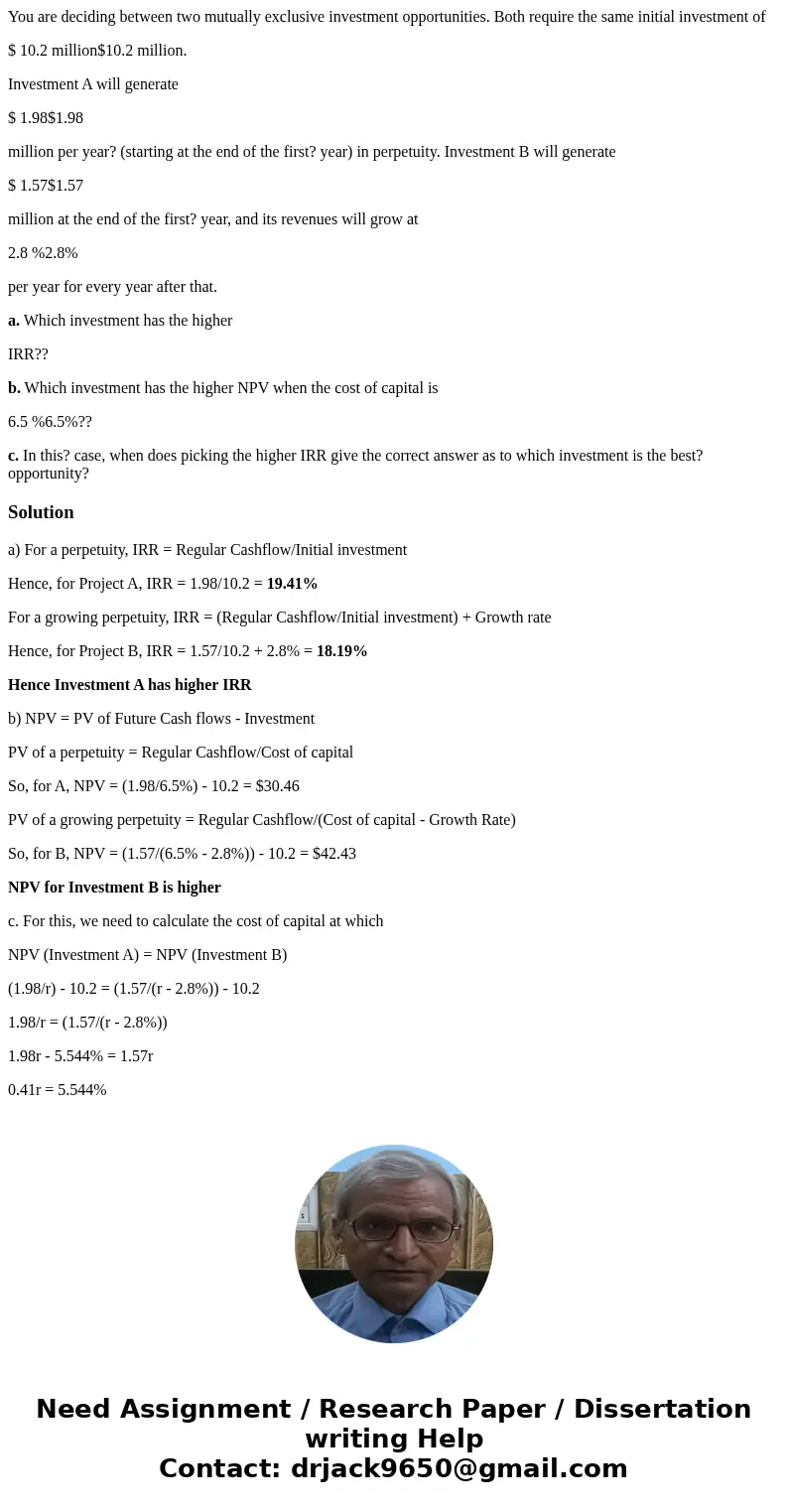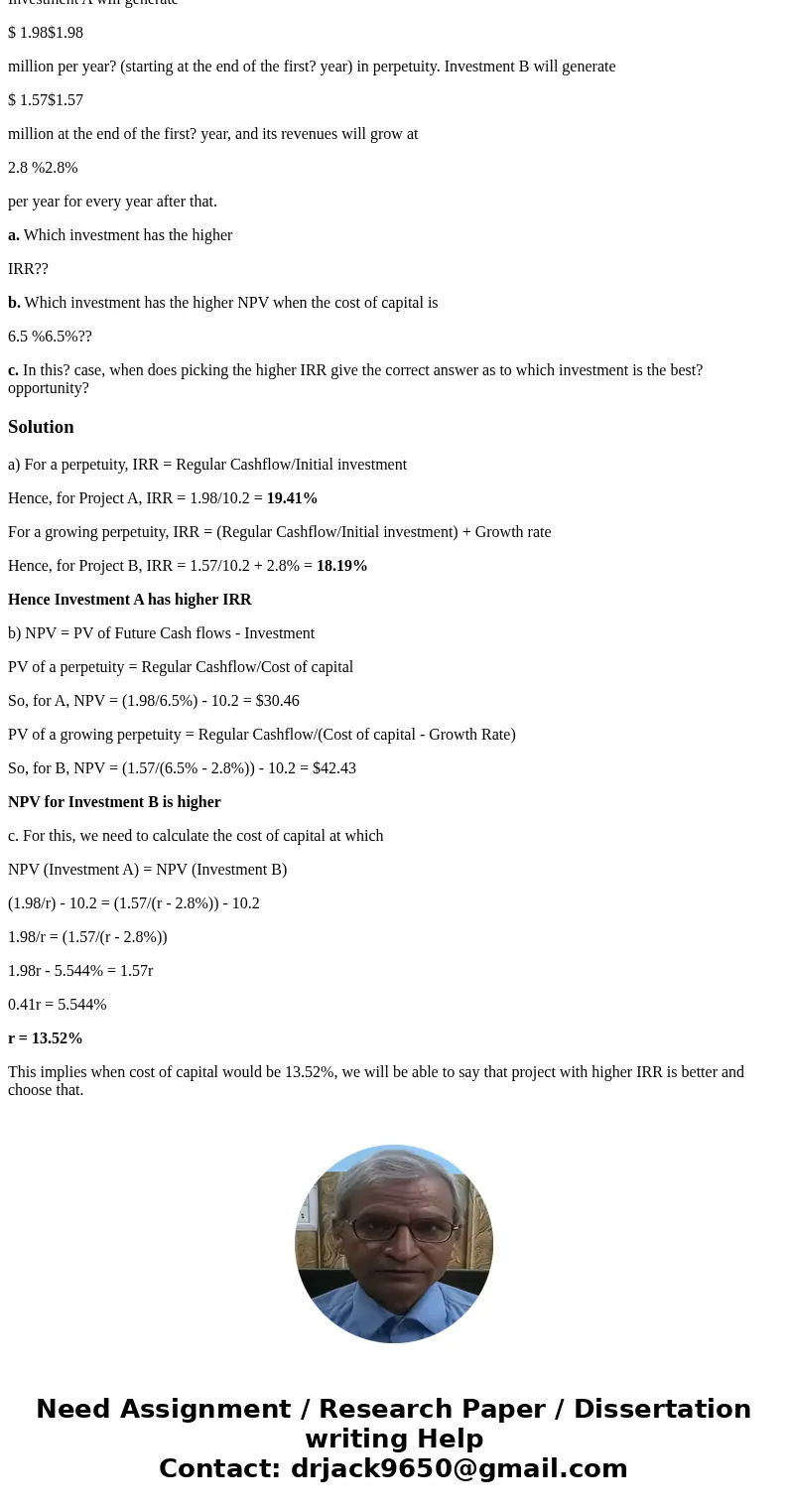You are deciding between two mutually exclusive investment o
You are deciding between two mutually exclusive investment opportunities. Both require the same initial investment of
$ 10.2 million$10.2 million.
Investment A will generate
$ 1.98$1.98
million per year? (starting at the end of the first? year) in perpetuity. Investment B will generate
$ 1.57$1.57
million at the end of the first? year, and its revenues will grow at
2.8 %2.8%
per year for every year after that.
a. Which investment has the higher
IRR??
b. Which investment has the higher NPV when the cost of capital is
6.5 %6.5%??
c. In this? case, when does picking the higher IRR give the correct answer as to which investment is the best? opportunity?
Solution
a) For a perpetuity, IRR = Regular Cashflow/Initial investment
Hence, for Project A, IRR = 1.98/10.2 = 19.41%
For a growing perpetuity, IRR = (Regular Cashflow/Initial investment) + Growth rate
Hence, for Project B, IRR = 1.57/10.2 + 2.8% = 18.19%
Hence Investment A has higher IRR
b) NPV = PV of Future Cash flows - Investment
PV of a perpetuity = Regular Cashflow/Cost of capital
So, for A, NPV = (1.98/6.5%) - 10.2 = $30.46
PV of a growing perpetuity = Regular Cashflow/(Cost of capital - Growth Rate)
So, for B, NPV = (1.57/(6.5% - 2.8%)) - 10.2 = $42.43
NPV for Investment B is higher
c. For this, we need to calculate the cost of capital at which
NPV (Investment A) = NPV (Investment B)
(1.98/r) - 10.2 = (1.57/(r - 2.8%)) - 10.2
1.98/r = (1.57/(r - 2.8%))
1.98r - 5.544% = 1.57r
0.41r = 5.544%
r = 13.52%
This implies when cost of capital would be 13.52%, we will be able to say that project with higher IRR is better and choose that.


 Homework Sourse
Homework Sourse